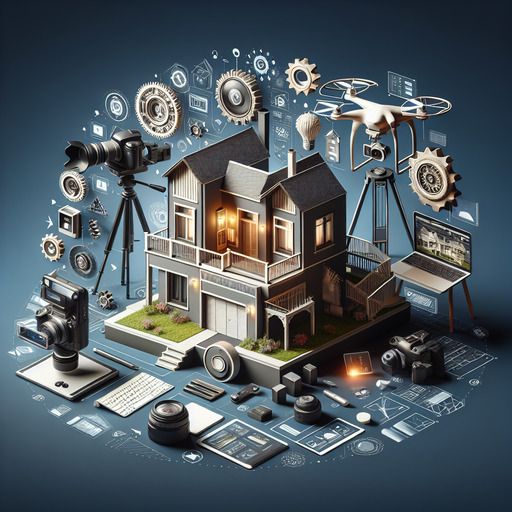
-
Table of Contents
- Mastering Real Estate Photography: Tips, Techniques, and Tools
- Understanding the Importance of Real Estate Photography
- Why Quality Matters
- Essential Real Estate Photography Tips
- 1. Use the Right Equipment
- 2. Master the Lighting
- 3. Perfect Your Composition
- Advanced Techniques: Real Estate Drone Photography
- Benefits of Drone Photography
- Editing and Post-Processing
- Pricing Your Real Estate Photography Services
- Conclusion
- Questions and Answers
- 1. What is the best time of day for real estate photography?
- 2. How can I make small rooms look larger in photos?
- 3. Is drone photography necessary for all real estate listings?
Mastering Real Estate Photography: Tips, Techniques, and Tools
In the competitive world of real estate, first impressions are everything. High-quality real estate photography can make or break a property listing, influencing potential buyers’ decisions before they even step foot inside. This guide will explore essential tips, techniques, and tools to elevate your real estate photography game, ensuring your listings stand out in the crowded market.
Understanding the Importance of Real Estate Photography
Real estate photography is more than just snapping pictures of a property. It’s about capturing the essence and potential of a space, enticing buyers to envision themselves living there. According to the National Association of Realtors, 87% of home buyers found photos to be the most useful feature when searching for a home online.
Why Quality Matters
- First Impressions: High-quality images create a positive first impression, increasing the likelihood of a property being viewed.
- Increased Engagement: Listings with professional photos receive 118% more views than those without.
- Faster Sales: Homes with professional photography sell 32% faster than those with amateur photos.
Essential Real Estate Photography Tips
To capture stunning real estate photos, consider these practical tips:
1. Use the Right Equipment
Investing in the right real estate photography equipment is crucial. A DSLR camera with a wide-angle lens is ideal for capturing spacious interiors. Additionally, a sturdy tripod ensures stability and sharp images.
2. Master the Lighting
Lighting can make or break a photo. Natural light is your best friend, so shoot during the day when rooms are well-lit. Use additional lighting equipment to fill in shadows and highlight key features.
3. Perfect Your Composition
Composition is key in real estate photography. Use the rule of thirds to create balanced images, and ensure vertical lines are straight to avoid distortion. Highlight the property’s best features, such as a fireplace or a stunning view.
Advanced Techniques: Real Estate Drone Photography
Real estate drone photography offers a unique perspective, showcasing properties from above. This technique is particularly useful for large estates or properties with beautiful surroundings.
Benefits of Drone Photography
- Showcase Property Size: Capture the full extent of a property and its surroundings.
- Highlight Unique Features: Emphasize features like pools, gardens, or nearby amenities.
- Stand Out: Differentiate your listings with eye-catching aerial shots.
Editing and Post-Processing
Real estate photography editing is essential to enhance images and correct any imperfections. Use software like Adobe Lightroom or Photoshop to adjust brightness, contrast, and color balance. Ensure the final images are realistic and true to life.
Pricing Your Real Estate Photography Services
Determining real estate photography pricing can be challenging. Consider factors such as the size of the property, the number of images required, and any additional services like drone photography or virtual tours. Research competitors’ pricing to ensure your rates are competitive yet profitable.
Conclusion
Mastering real estate photography requires a blend of technical skills, creativity, and the right equipment. By following these tips and techniques, you can create compelling images that attract buyers and help sell properties faster. Remember, the quality of your photos can significantly impact the success of a real estate listing.
For more information on real estate photography, check out this Wikipedia page on real estate photography.
Questions and Answers
1. What is the best time of day for real estate photography?
The best time for real estate photography is during the day when natural light is abundant. Early morning or late afternoon provides soft, diffused lighting that enhances the property’s features.
2. How can I make small rooms look larger in photos?
To make small rooms appear larger, use a wide-angle lens and shoot from a corner to capture more of the space. Ensure the room is well-lit and decluttered to create an open feel.
3. Is drone photography necessary for all real estate listings?
Drone photography is not necessary for all listings but can be beneficial for large properties or those with unique outdoor features. It provides a different perspective that can enhance the appeal of certain listings.
If you’re interested in learning more about our real estate photography services or have any questions, please contact us.